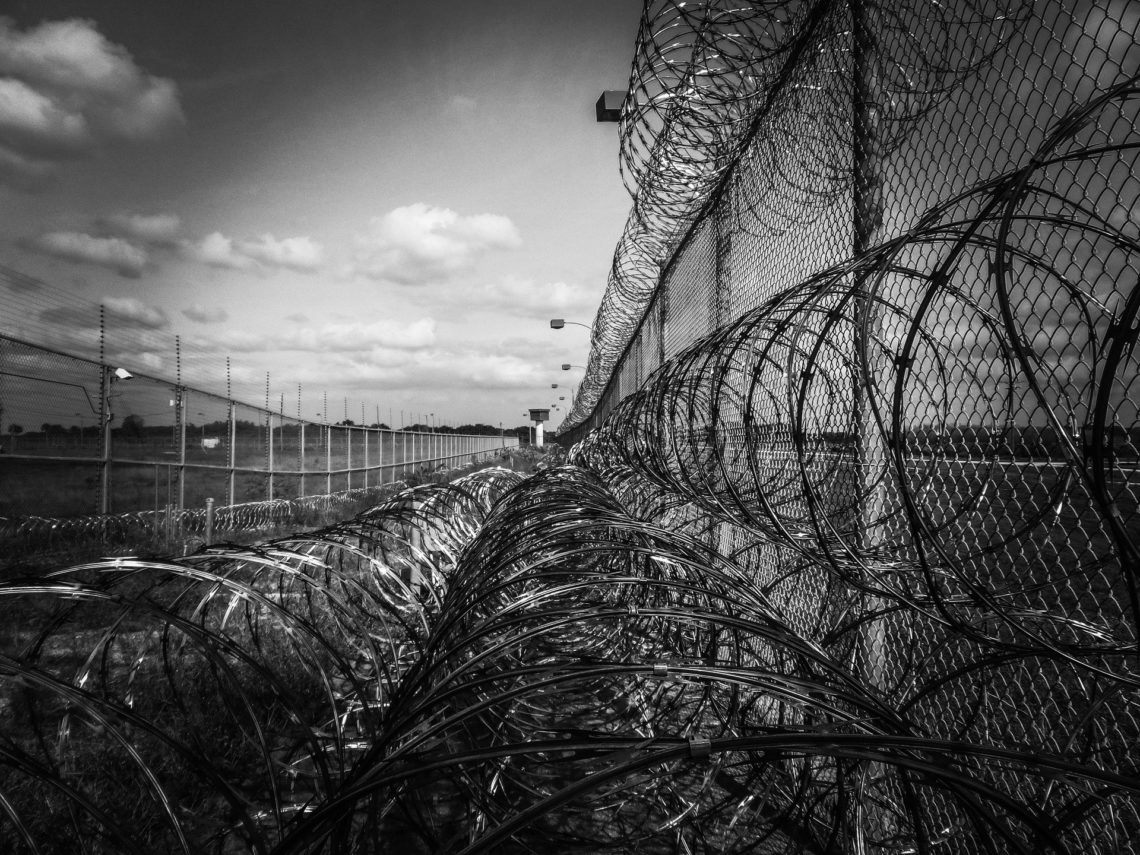By Suann R. Endicott
In the 1980s, the Reagan Administration declared a War on Drugs which has led to mass incarceration. The United States now has the highest incarceration rate and one of the highest recidivism rates in the world (Deady, 2014). I would argue that the War on Drugs has crippled our society and the results have not been positive. What was a well-intentioned plan or admirable goal has had many negative outcomes such as: mass incarceration; social castes individuals are not able to break out of; prisons riddled with violence, abuse, and in-humane treatment of correctional officers and inmates; high recidivism rates; the restriction of basic rights such as voting, housing and employment; and a general lack of support and resources for people returning to the outside world after incarceration. This is an issue that cannot go unaddressed any longer.
Being convicted of a felony crime in the United States of America means more than just giving up your freedom, you also hand over your civic rights. As Michelle Alexander (2012), author of The New Jim Crow, states, “They [felons] are legally denied the ability to obtain employment, housing, and public benefits—much as African Americans were once forced into segregated, second-class citizenship in the Jim Crow era.” Her point is that the criminal justice system is racist against African Americans—she is right. African American men make up roughly 6% of the United States population, yet they make up 44% if the prison population (Duvernay, A. & Moran, J. 2016). Felons, especially African Americans with felons have a diminished ability to move up in the world. Prison sentences can be handed down from generation to generation and can become a way of life that few escape from mostly due to systematic racism and poverty.
I question whether someone who has committed a crime should not be able to vote for up to 7 years after being released from prison (Felony Disenfranchisement in the United States, 2020). In 2008, more than 5.8 million felons were not allowed to vote due to disenfranchisement, which makes up almost 2.5% of the voting population. Although policy varies from state to state, Maine and Vermont are the only states that do not disenfranchise their felons in or out of prison (Felony Disenfranchisement in the United States, 2020). While it is true that a person who commits a crime should have to pay their debt to society, but at what cost and when is their payment over?
Mass incarceration started in the 1980s when President Reagan officially announced the War on Drugs. Since then, the prison population has jumped from approximately 300,000 to over 2 million, with drug convictions accounting for most of the incarcerations (Alexander, 2012). The United States has the highest rate of incarceration in the world, even higher than repressive countries such as China or Russia. As a comparison, Germany imprisons 93 people for every 100,000 adults and children, whereas the United States imprisons 750 per 100,000 (Alexander, 2012). Instead of taking a ‘pro’ approach, or focusing on a positive solution, the United States is trying to treat people with mental health and addiction problems with a heavy dose of incarceration. It is not working. When we focus on the problem (war on drugs) instead of the solution (rehabilitation), the problem only grows.
As such, the United States of America has one of the highest recidivism rates of any country in the world. Essentially, this means that American criminals have the highest “tendency to relapse into a previous condition or mode of behavior especially relapse into criminal behavior” (Merriam-Webster, n.d.). According to a report from the U.S. Department of Justice Office of Justice Programs Bureau of Justice Statistics, 83% of offenders released from prison were arrested at least one time within 9 years of their release (Alper, & Dorose, 2018). The report examined 401,228 inmates released in 30 states from 2005-2014. Of the inmates in this report 39.7% were white, 40.1% African American, and 17% Latino. Furthermore, 37.1% were under the age of 29 years old (Alper, & Dorose, 2018). Based on the information presented in this study and the level of mass incarceration, it is not hard to conclude that our system is ineffective.
The prison system in the United States is the most punitive system in the world. With heavy sentences for drug crimes, three strikes laws and minimal effort to truly focus on rehabilitation, it’s no wonder people cannot succeed. I am not rallying for criminals here, but I do believe that with the correct circumstances, enough positive motivation and the ability to heal past the traumas, many of these inmates’ futures and their families’ futures could be different. We cannot treat a mental health or addiction problem with incarceration only. Many people who are offenders—whether it be drugs, sex crimes, or violence—have likely been exposed to that and/or been a victim themselves. I am not saying that being a victim and perpetuating the cycle is an excuse. But it is reality.
When we acknowledge the reality, we can come closer to a viable solution. I have personal experience with being around adults committing crimes, having a criminal mentality, perpetuating violence, taking drugs, and hating the police. It was always us versus them. As a young person I fell right in those footsteps. It was second nature to live that life. However, through a lot of adversity, I have been successful in overcoming many hurdles, but I had to have a lot of help from mentors, counselors and friends who have overcome similar experiences themselves. I have an uncle who has been in and out of prison or jail since he was 15 years old. He has never been able to stay sober for long. He struggles with being violent but has never sought help for these issues or received any during all his years in prison. Most people coming out of prison do not have the proper tools or resources, nor have they had space to focus on the real issues—trauma, abuse, mental health, or addiction. Aren’t we doing a disservice to our community by having all these men and women locked up for years, without helping them get to the root of the problems?
Former President Barack Obama was the first President in history to meet with inmates and corrections officers in a federal prison (Obama, 2017). He has spent much of his career advocating for change to our criminal justice system. He also challenges our founding principles and our country’s character. How do we treat people who make mistakes—even large mistakes? I agree that they deserve second chances, and the opportunity to redeem themselves. In the Harvard Law Review, Obama states:
All Americans have an interest in living in safe and vibrant neighborhoods, in raising their children in a country of equal treatment and second chances, and in entrusting their liberty to a justice system that remains true to our highest ideals. We simply cannot afford to spend $80 billion annually on incarceration, to write off the seventy million Americans —that’s almost one in three adults—with some form of criminal record, to release 600,000 inmates each year without a better program to reintegrate them into society, or to ignore the humanity of 2.2 million men and women currently in U.S. jails and prisons and over 11 million men and women moving in and out of U.S. jails every year. (Obama, 2017)
My hope is that we can move closer to this ideal as a country. We will have start by looking around the world to see how other countries are doing it.
Norway is a world leader in showing the successful results of a rehabilitation-focused prison system—the pro approach I mentioned above. Norway is a much smaller country and not everything about their process will work if applied in the U.S.A., but it is a great starting point. Norway’s focus for their inmates is life after incarceration. Norway’s incarceration rate is 72 out of 100,000 and their 20% recidivism rate ranks them the lowest in the world (Encartele, Inc. 2018). In Norway, they have no death penalty or life-in-prison sentences. Their maximum sentence is 21 years, although if the state deems the prisoner as not rehabilitated, they get 5 years added on, perpetually if necessary (Encartele, Inc. 2018).
In the Norway prison system, they have three core values: normality, humanity, and rehabilitation (Lieberman & Morales 2018). Below is an excerpt out of the US-Norway Exchange document:
The Norwegian Correctional Service believes that people go to court to get punished and they go to prison to become better neighbors; their officers are trained to play an active role in residents’ rehabilitation by using positive incentives and motivational interviewing, engaging residents in health-focused programming and providing intensive mentorship and positive socialization (Ahalt, Haney, Ekhaugen, & Williams 2020).
Their rooms are much different than the cells in the U.S. Norwegian prisoners get keys to their own room, padded mattress, computer, TV, closet, sheets, and regular clothes. Even their living quarters have a kitchen (with knives, secured with cables), washer and dryer, and everything a normal house has in it (Lieberman & Morales 2018). I watched a short video embedded in a CNN article showing inmates playing guitars, using the recording studio, playing sports and living a relatively normal life compared to the outside world. When the correctional officer was asked if he ever feared for his life, he said no and that he has a great relationship with his inmates (Lieberman & Morales 2018). Essentially, they create the environment to be as normal as possible so the transition from prison to the outside world is not such a shock.
There was a video interview with a former American correctional officer in this CNN story who did not think this type of system would work at all in the United States. He felt that our criminals are different, they are worse than Norway’s criminals, and that they needed and deserved to be punished (Lieberman & Morales 2018). But are our criminals worse, or are they treated poorly and therefore feel as though they must fight back? Is the “us versus them” mentality simply being perpetuated inside prison walls? It would never be realistic to assume all 2 million prisoners in the United States would get a padded mattress and their own room. Even so, it is a good place to start with a set a principles that moves us closer to creating a safe and less violent prison system.
It is necessary to acknowledge the men and women who are correctional officers in this equation. They too are in desperate need of reform. Not only is living in a correctional institution damaging to your health, but working in one is too (Ahalt, Haney, Ekhaugen, & Williams, 2020). After the United States entered the era of mass incarceration, the overcrowded facilities turned into dehumanizing and punishment-oriented regimes. Emerging data on corrections officers is showing that working in these conditions have plagued them with high-stress medical issues, and high rates of chronic disease (Ahalt, Haney, Ekhaugen, & Williams, 2020).
In 2018, this change started to happen in a North Dakota prison when the US-Norway Exchange program launched (Ahalt, Haney, Ekhaugen, & Williams, 2020). For two years, a team of government officials and policy makers were immersed in Norway, being introduced to a whole new radical concept and approach to corrections. In 2018, 10 participants ranging from wardens, correctional officers, sergeants, and captains went to Norway for a 10-day learning and on-the-job training in a prison. Upon their return, 54 additional correctional staff joined for 20-hours of training delivered over three sessions by Norwegian correctional staff. During this training, staff learned about motivational interviewing, behavior psychology, criminal punishment, ethics, and proper use of force. After training, they did a 6-month pilot of the program, which has yielded positive results for the inmates and correctional officers (Ahalt, Haney, Ekhaugen, & Williams 2020). Six months after starting the program, one of the correctional officers stated:
“On the last day of training we had a big disturbance, I found myself touching a participant on the shoulder and saying, ‘I’m going to take care of you right now.’ …I went 10 years without touching an inmate in a non–use-of-force situation. I just didn’t touch people. More, I’m not about to tell an inmate ‘I’m going to take care of you.’ This has continued since then. I’ve seen it in all my interactions. I have more inmates saying ‘thanks for helping me’ and more inmates that are talking to me first before they bang on cell doors or kick and scream. It’s amazing.” (Ahalt, Haney, Ekhaugen, & Williams 2020).
This statement speaks volumes to the effectiveness of this type of approach. There were similar statements from inmates saying that they feel like they are being treated like humans again and that they do not feel the need to act out as much (Lieberman & Morales 2018). People learn through modeled behavior, by teaching people how to be a good neighbor through action and treating them in that way, it is an effective way to start a change. Inmates need to feel valued, worthy, and shown that people can change.
This is a very complex issue that has no easy quick-fix solution. The shift will need to happen at many levels: federal, state, county, and city. I admire North Dakota for moving in such a direction with the US-Norway Exchange. They are leaders in modeling a more effective and rehabilitation-based prison model. It is going to take us years of systematic change and hard work to change the tides. I am aware that we cannot do the same thing in each state or completely replicate Norway. Our cultures are different, and this is not a one-size-fits-all solution—but the culture can be changed over time.
I may be accused of many things such being too liberal or a sympathizer by my stance on this problem. I would respond to that by saying this is not a political issue, this is a human issue. We have a responsibility to create an environment that cultivates the change we are seeking and not an atmosphere that perpetuates the cycle. Our society needs more equality, fair rights and opportunities for people who make mistakes—even big ones—as those individuals have a different element and experience to bring to the table. That has been my experience in my life. I know the struggle firsthand and it has shaped me into the person I am today. I did not do it by myself, I had to have help. We will never rehabilitate everyone. There will be people who do not want the help and are not willing to change. The evidence shows that the individuals who seemed like they would never change, did in fact change in a different environment. I believe we are on the cusp of a huge movement that will have a positive impact on the lives of our correctional officers, inmates, and families on both sides of the fence. I will end with this, a quote I always try to remember by Mother Teresa: “I will never attend an anti-war rally; if you have a peace rally, invite me.” What we channel our attention and resources on, is what grows larger.
References
Alexander, M. (2012). They say I say. Graff, G., Birkenstien, C. & Durst, R. (4 eds.), The New Jim Crow (pp.230-247)
W.W. Norton & Company Ahalt, C., Haney, C., Ekhaugen, K. & Williams, B. (2020). Role of a US–Norway exchange in placing health and well-being at the center of US prison reform. American Journal of Public Health. Supplement 1, 2020. Vol. 110. No. S1. http://web.a.ebscohost.com.proxy.consortiumlibrary.org/ehost/pdfviewer/pdfviewer?vid=0&sid=bca3289b-cd70-4f15-a7c1-9225cb2da2c6%40sdc-v-sessmgr03
Alper, M. & Dorose, M. (2018). 2018 update on prisoner recidivism: A 9-year follow-up period (2005-2014). U.S. Department of Justice Office of Justice Programs Bureau of Justice Statistics-Special Report. (Consortium Database).https://www.bjs.gov/content/pub/pdf/18upr9yfup0514.pdf
Deady, C. (2014). Incarceration and recidivism: Lessons from abroad. Pell Center for International Relations and Public Policy. http://www.antoniocasella.eu/nume/Deady_march2014.pdf
Duvernay, A. & Moran, J. (2016) 13TH . USA. Encartele, Inc. (2018, April 27) Scandinavian jails: Why is their recidivism rate so much better? https://www.encartele.net/2018/04/what-can-us-correctional-facilities-learn-from-scandinavian-jails/
Felony disenfranchisement in the United States. (2020, March 9). Wikipedia. Retrieved April 10,2020, from https://en.wikipedia.org/wiki/Felony_disenfranchisement_in_the_United_States
Lieberman, D. & Morales, C. (2018, June 22). Heated floors and pillow-top mattresses… in prison. CNN. https://www.cnn.com/2018/03/08/us/prison-reform-north-dakota-norway/index.html Merriam-Webster. (n.d). Recidivism. In Merriam-Webster.com dictionary. Retrieved April 10, 2020, from https://www.merriam-webster.com/dictionary/recidivism
Obama, B. (2017, January 5). The president’s role in advancing criminal justice reform. Harvard Law Review. 130 Hav. L. Rev. 118. https://harvardlawreview.org/2017/01/the-presidents-role-in-advancing-criminal-justice-reform/





